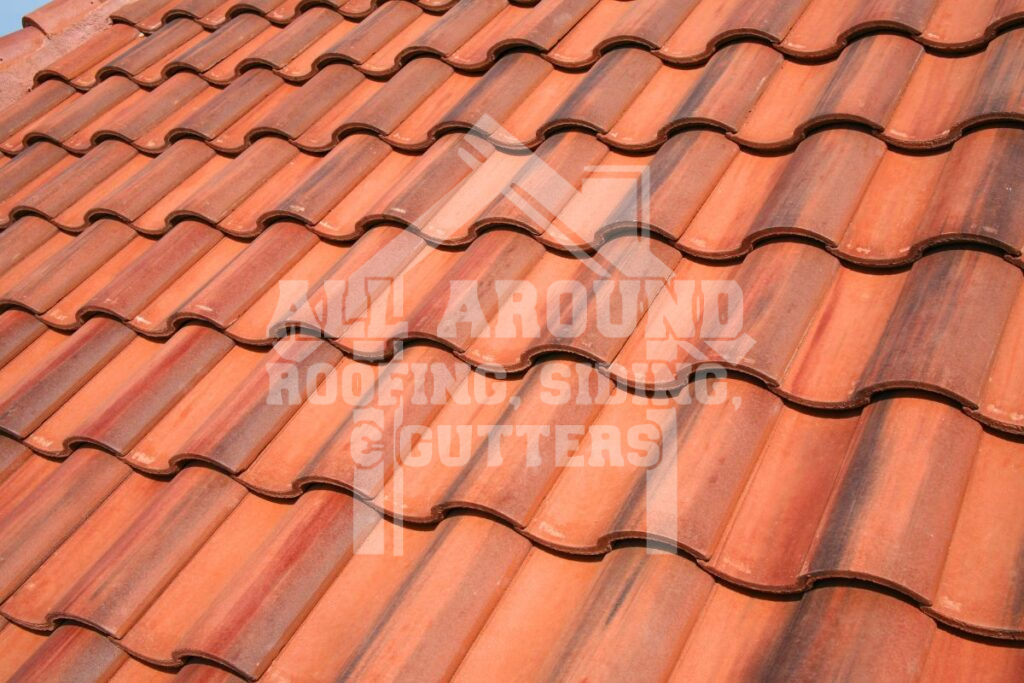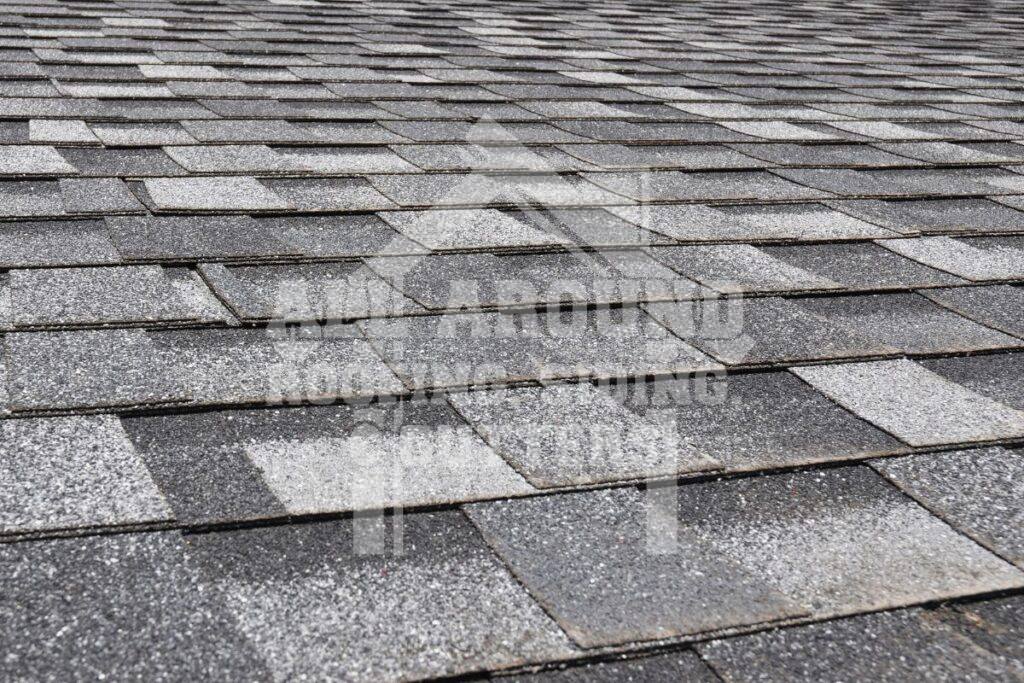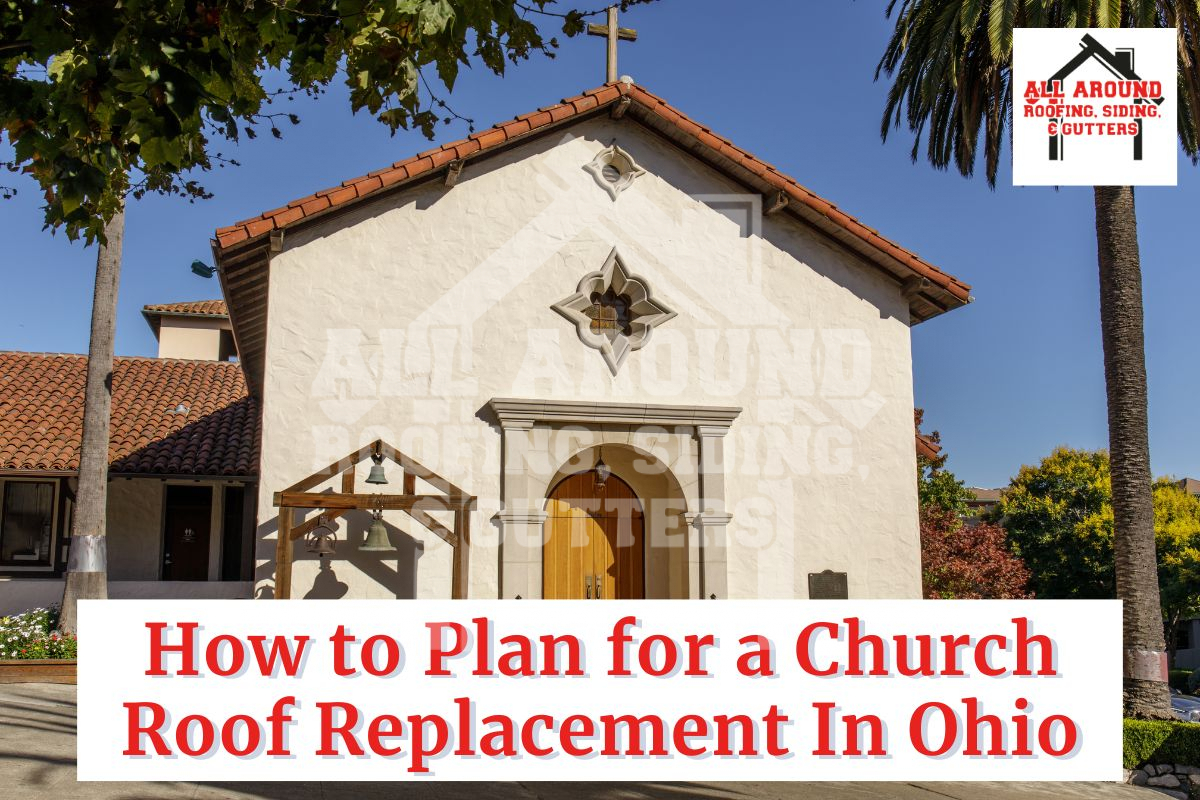Keeping your place of worship safe and in good condition is very important. One big part of this is making sure your church’s roof is damage-free. Checking the roof regularly and replacing it when needed can stop expensive repairs and keep everyone safe.
This blog post will guide you through planning a roof replacement for your church in Ohio and will explain everything you need to know while preparing.
What Is Involved In Replacing A Church Roof In Dayton, Ohio?

#1. Assessment and Planning
> Hire a Professional:
The first step is to schedule a roof inspection. This involves hiring a professional to evaluate your roof, identify issues, and see if a full replacement is necessary. The expert will give you useful advice on the roof’s condition and suggest the best way forward.
> Signs Of Church Roof Damage
- Leaks: Water spots or stains on ceilings and walls.
- Age: Roof is over 20 years old.
- Missing or Damaged Shingles: Visible gaps or broken shingles.
- Curling or Buckling: Shingles that are curled or buckled.
- Granule Loss: Shingles that have lost their granules.
- Cracks: Cracks in the roof’s surface or flashing.
- Sagging: Sagging or uneven rooflines.
- Mold and Mildew: Visible signs of mold and mildew growth like stains or moisture.
- Animal Infestation: Animals nesting in the attic or roof.
#2. Obtain Necessary Permits and Approvals
> Local Regulations:
Before starting, ensure all necessary permits and approvals are in place. This involves contacting local authorities to understand specific permit needs and complying with zoning regulations and building codes.
> Historical Considerations:
If your church is historically significant, consult preservation authorities to make sure the roof replacement follows historical guidelines. Work closely with experts in historical restoration to maintain the church’s heritage during the project.
#3. Choose a Roofing Contractor
> Get Recommendations:
Ask other churches or community members for recommendations if they have recently replaced their roofs. It is crucial to choose a reputable and experienced roofing contractor who has previously completed projects similar to yours.
> Request Quotes:
When considering contractors, gather multiple quotes and evaluate their experience, references, and qualifications.
Carefully review contracts, warranties, and timelines before deciding. Once you’ve narrowed down your options, ensure the contractor has a strong track record with church roof replacements. Also, check their warranty policies to ensure they offer a comprehensive guarantee on their work and materials.
#4. Secure Financing and Fundraising
To secure financing and fundraising for a church roof replacement project, first create a detailed budget that includes all anticipated costs, such as materials, labor, permits, and a reserve fund for unexpected expenses.
Research various funding sources, such as government grants, bank loans, crowdfunding, direct appeals to the congregation, and charity auctions. Your roofing company may also offer financing options, streamlining the process so work can begin immediately.
#5. Go For Quality Roofing Materials
Choose durable materials that can withstand Ohio’s harsh weather, balancing cost with quality while ensuring they complement the church’s architecture and style.
> Stone-Coated Metal Tiles
Stone-coated metal tiles combine the strength of galvanized steel with the traditional look of stone. They are durable (lasting over 50 years), low maintenance, energy efficient, and versatile in design, making them a popular choice for churches.
> Slate Tiles

Slate roofs provide a historic and traditional charm with impressive durability (70+ years). Their earthy tones create a classic and timeless look.
> Asphalt Shingles

Asphalt shingles combine a traditional look with modern technology, making them a cost-effective alternative to slate or copper. They are also durable and versatile, making them a popular choice for churches.
Maintain Historical and Aesthetic Integrity
Preserving the church’s historical significance and architectural integrity is vital during a roof replacement. This involves adhering to historical guidelines and selecting roofing materials that complement the church’s unique style. By collaborating with roofing experts and paying attention to aesthetic considerations, the church ensures that the new roof enhances the building’s overall appeal while maintaining its heritage.
#6. Preparing for the Roof Replacement
> Scheduling:
Collaborate with the contractor to set a suitable timeline, considering potential conflicts with church events or services.
> Communication:
Keep the congregation and local community informed about the project. Share details about the timeline, potential disruptions, and safety precautions.
> Safety Precautions:
Discuss safety measures with the contractor. This may include securing the worksite, providing alternative access routes, and ensuring proper ventilation.
> Temporary Accommodations:
Arrange temporary accommodations or alternative meeting spaces if the roof replacement will disrupt regular church services or activities.
#7. The Roof Replacement Process
> Removal of Old Roof
The existing roof material is taken off, and the underlying structure is checked for damage.
> Structural Repairs
After the old roof is removed, the underlying structure is carefully inspected for issues. Any structural problems, like damaged rafters or decking, are fixed.
> New Roof Installation
The chosen roofing material is installed, following manufacturer instructions and local building codes.
> Flashing and Sealing
Proper flashing and sealing around roof openings, such as chimneys and vents, are crucial for preventing leaks. Skilled workers with experience in church roof replacements should handle this part of the installation.
> Quality Inspection
A final check ensures the roof is properly installed and any remaining debris is cleared away.
#8. Final Inspection and Maintenance
After completing the roof replacement project, conduct a comprehensive inspection to verify proper installation and compliance with standards. Establishing a maintenance plan is essential for prolonging the new roof’s lifespan and preventing future issues. This includes allocating funds for regular upkeep such as cleaning, repairs, and ensuring the continued integrity and functionality of the church roof.
Also Read: Roof Replacement Vs. Roof Repair: What’s The Best Option?
Conclusion
There are many steps involved in planning a church roof replacement in Ohio. Follow these steps for a successful process, and remember to schedule regular inspections and maintenance to protect your church’s integrity.
For quality church roofing services in Ohio, trust All Around Roofing, Siding & Gutters. We handle everything from assessment to maintenance with expertise tailored to your church’s needs. Count on us for professional and reliable roofing solutions that prioritize longevity and integrity. Call us at (937) 902-2839 today.


